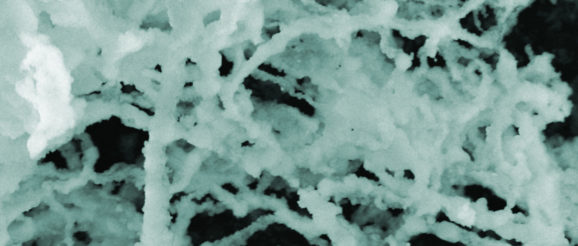Let’s Stay Together – Innovation

Getting Protein Bonds to Stick
Imagine a match made in heaven: yin and yang, Batman and Robin, peanut butter and jelly. Now, try to picture what those combinations would look like in the realm of chemistry. Having trouble? Don’t worry — we’ve got an example for you: therapeutic proteins and nanoparticles. Therapeutic proteins are molecules designed to create a beneficial effect in a patient when provided as a medical treatment; the presence of these proteins changes the patient’s body chemistry, thereby limiting the effects of a disease. Nanoparticles are tiny structures that bridge the gap between large samples of material and individual atoms and molecules; this means they have a higher proportion of surface area than normal, giving them unique properties that have been investigated for medical applications. Therapeutic proteins have a very specific purpose; they interact with molecules inside our bodies in order to create results that limit the impact of a disease or condition. Nanoparticles have a very specific design; they include components and structures that allow them to effectively seek out molecules, cells, tissues — the list goes on, depending on how the nanoparticles are engineered. So, we have proteins with a purpose, but no ability to carry out their task, and nanoparticles, with all the tools they could possibly need but no ultimate goal.
The answer, then, seems simple: have the proteins use the nanoparticles as a delivery tool of sorts, so that the proteins can actually deliver the results they’re designed to produce. With such an elegant solution, what’s the problem? We can’t get them to stick together. With complex chemical reactions and processes, scientists have had only the most limited of success in getting proteins to bind to nanoparticles. Even then, these bonds are transient at best, never remaining stable for long — that is, until now.
Researchers at the University at Buffalo have discovered a novel way to encourage proteins and nanoparticles to stay bound together, and it’s had remarkable success. Rather than just attempting to work with the proteins and nanoparticles as they are, the team decided to alter each component to make them more compatible for bonding. They started with a nanoparticle designed around a foundation of chlorophyll, phospholipid and cobalt. Next, they modified the therapeutic proteins to include a polyhistidine tag — a sequence of several histidine amino acids that are tacked onto the original protein. However, this polyhistidine tag can embed itself in the outer shell of these engineered nanoparticles, so that the therapeutic proteins and nanoparticles will now stay together.
These polyhistidine tags, not commonly used in medical applications, have proven to be the key we needed to bring the two halves of our yin and yang together. So, what can we do now? What broader implications does this innovation have? Incredibly, this new framework for delivering medical treatments can improve just about any medical therapy by increasing the accuracy and effectiveness of our efforts. Rather than providing treatments to the entire body as a whole, diluting the effectiveness and increasing the risk of negative side effects, we can now target treatments by tying proteins to nanoparticles that can deliver them directly to the desired location, such as tumors with cancerous cells, in high concentrations. In preliminary tests, when the nanoparticles and proteins were combined with an adjuvant, a compound used with vaccines and medical treatments to improve effectiveness, the composition was able to produce a response against HIV. Moving forward, more in vitro research and eventual clinical trials will show us just how far this development can take us. For now, we can’t forget to marvel at the incredible step we’ve just taken towards fighting cancer, HIV and everything in between.
University at Buffalo. “Happily ever after: Scientists arrange protein-nanoparticle marriage.” ScienceDaily. ScienceDaily, 20 April 2015. <www.sciencedaily.com/releases/2015/04/150420122834.htm>.
